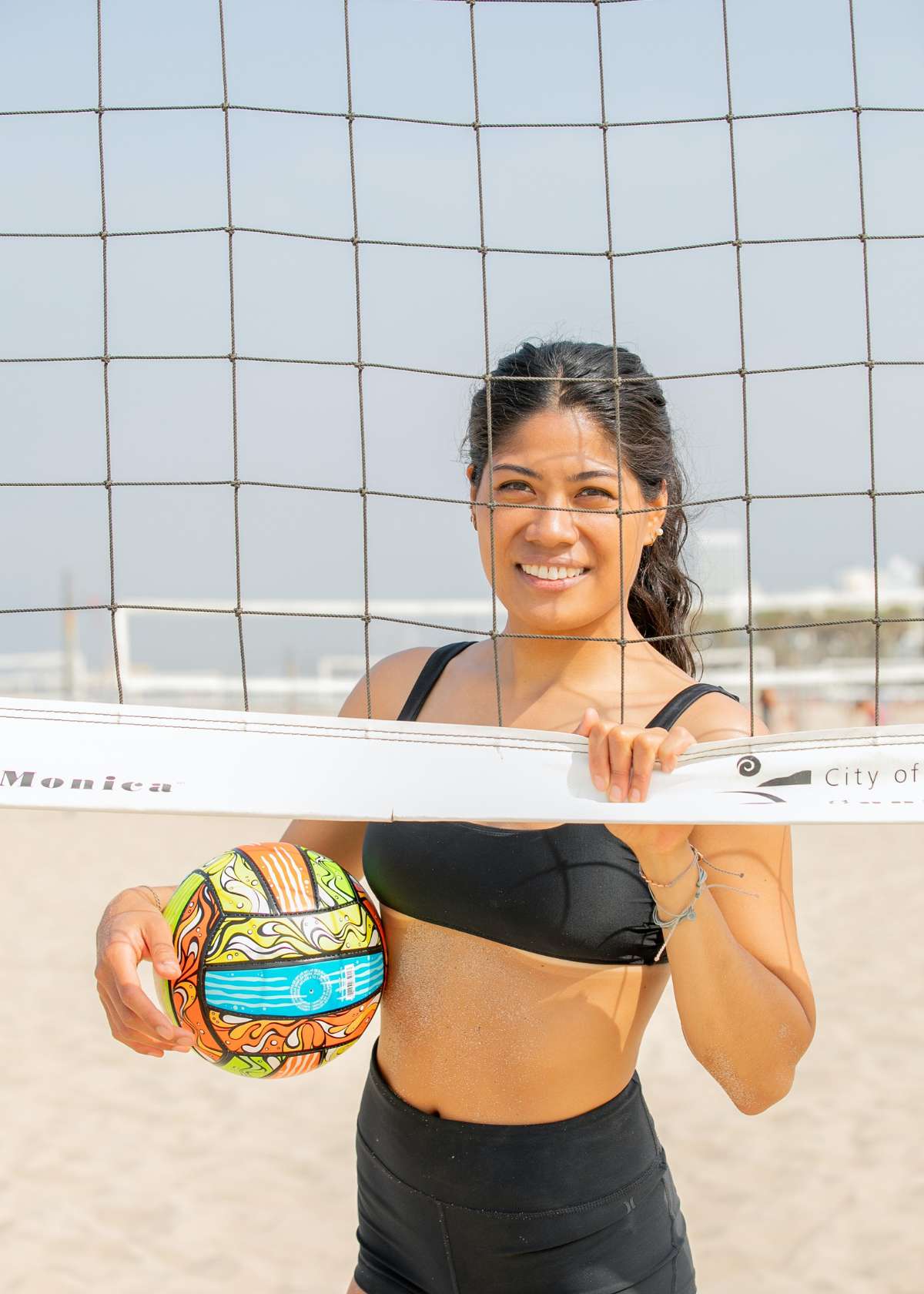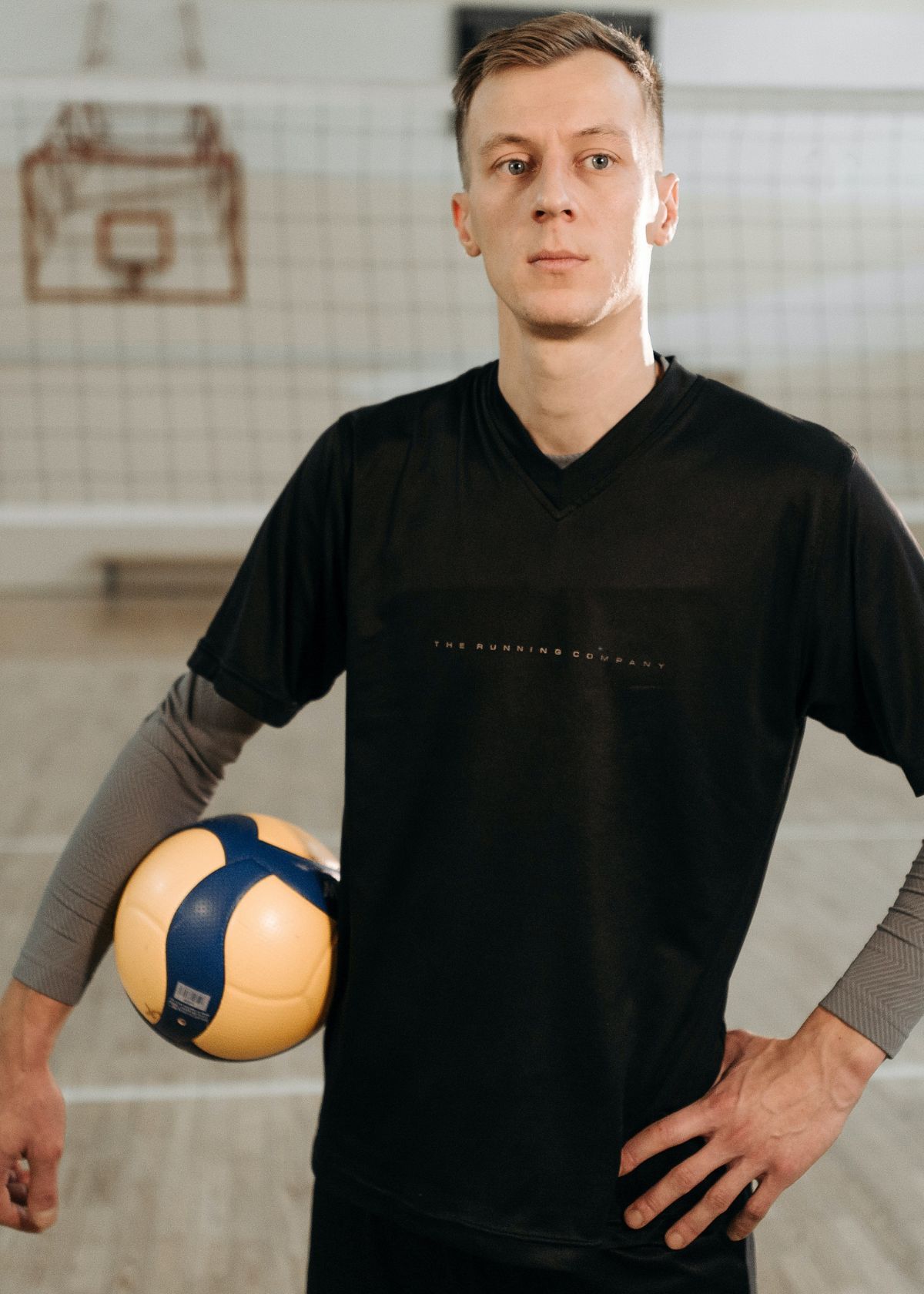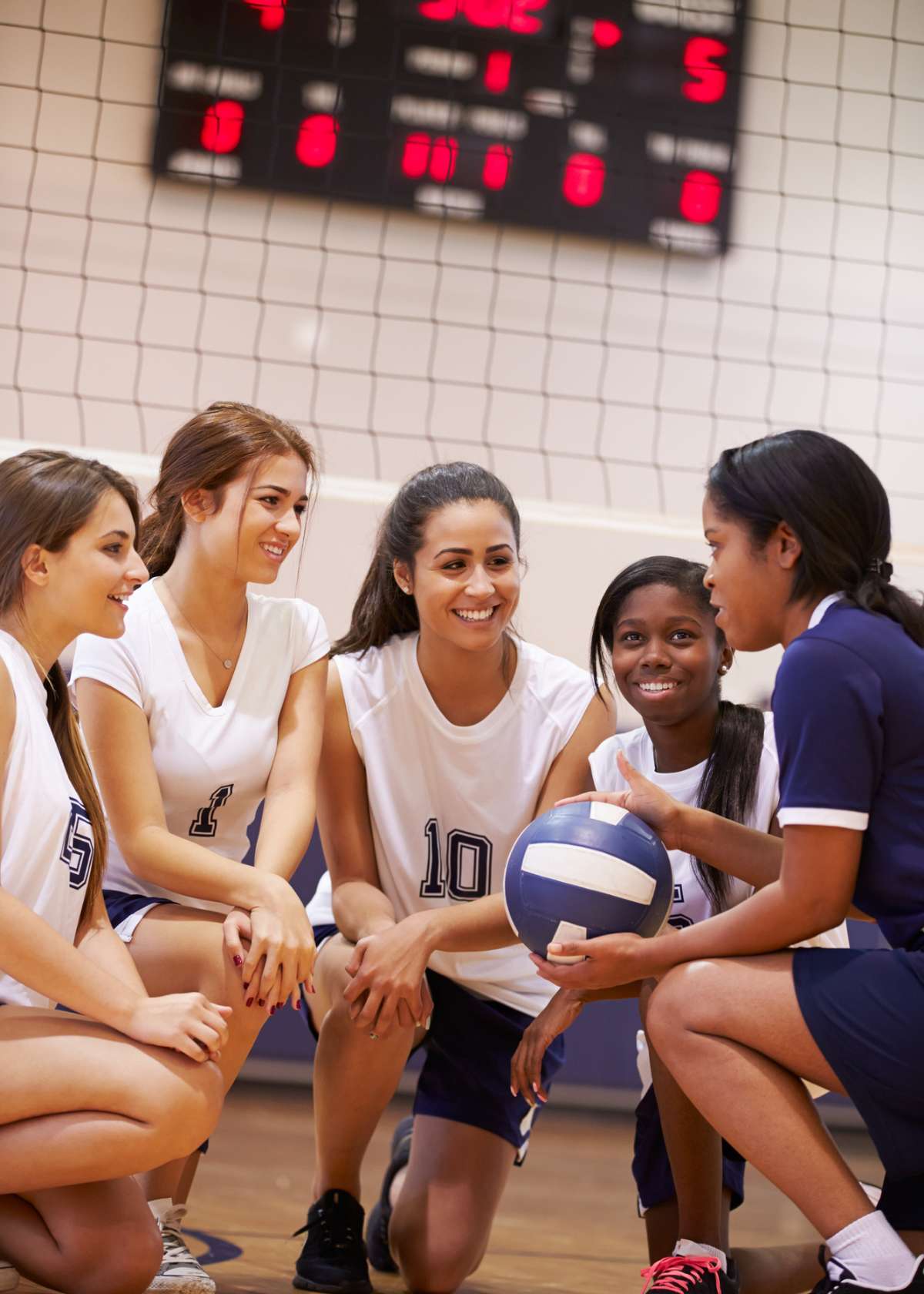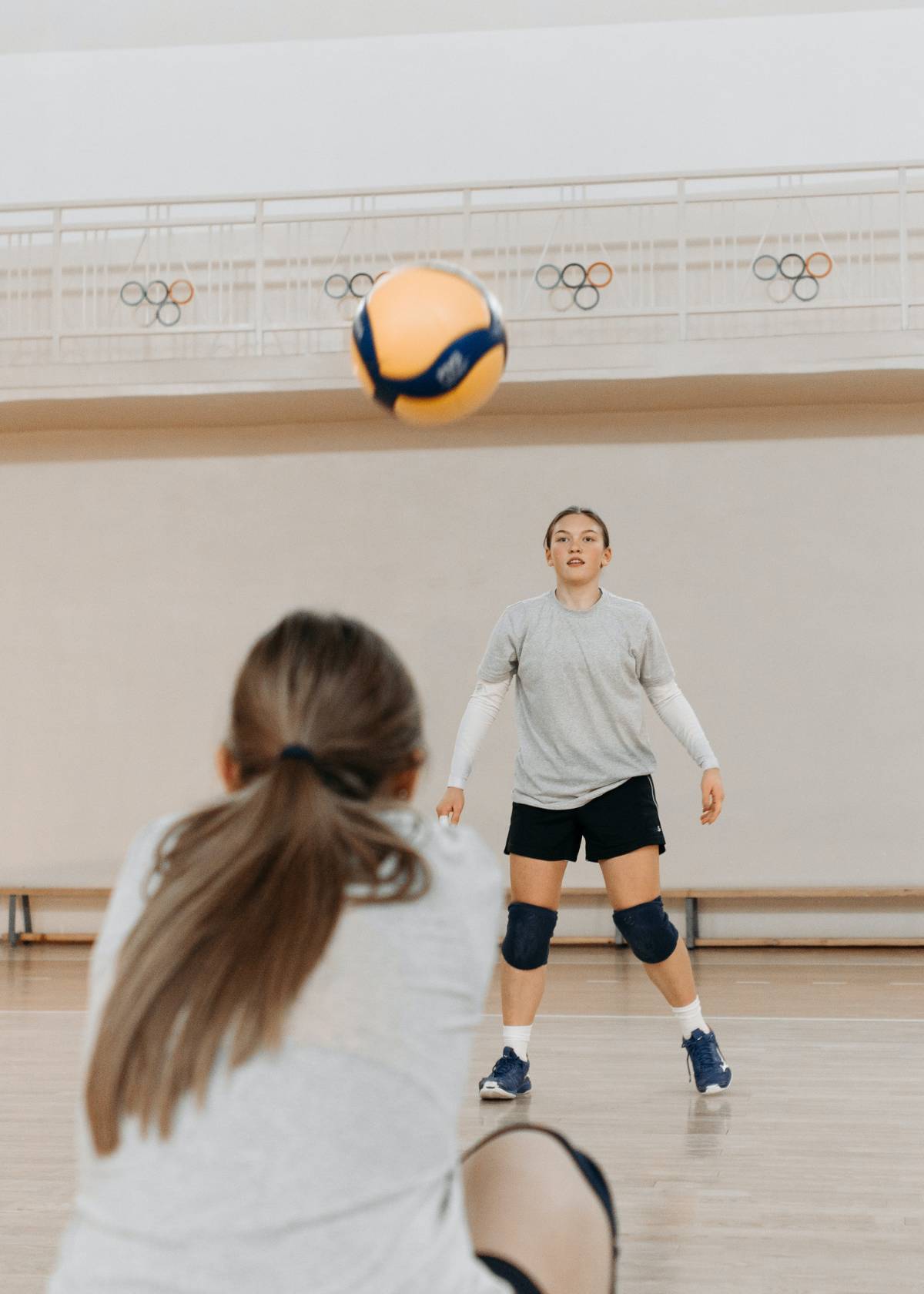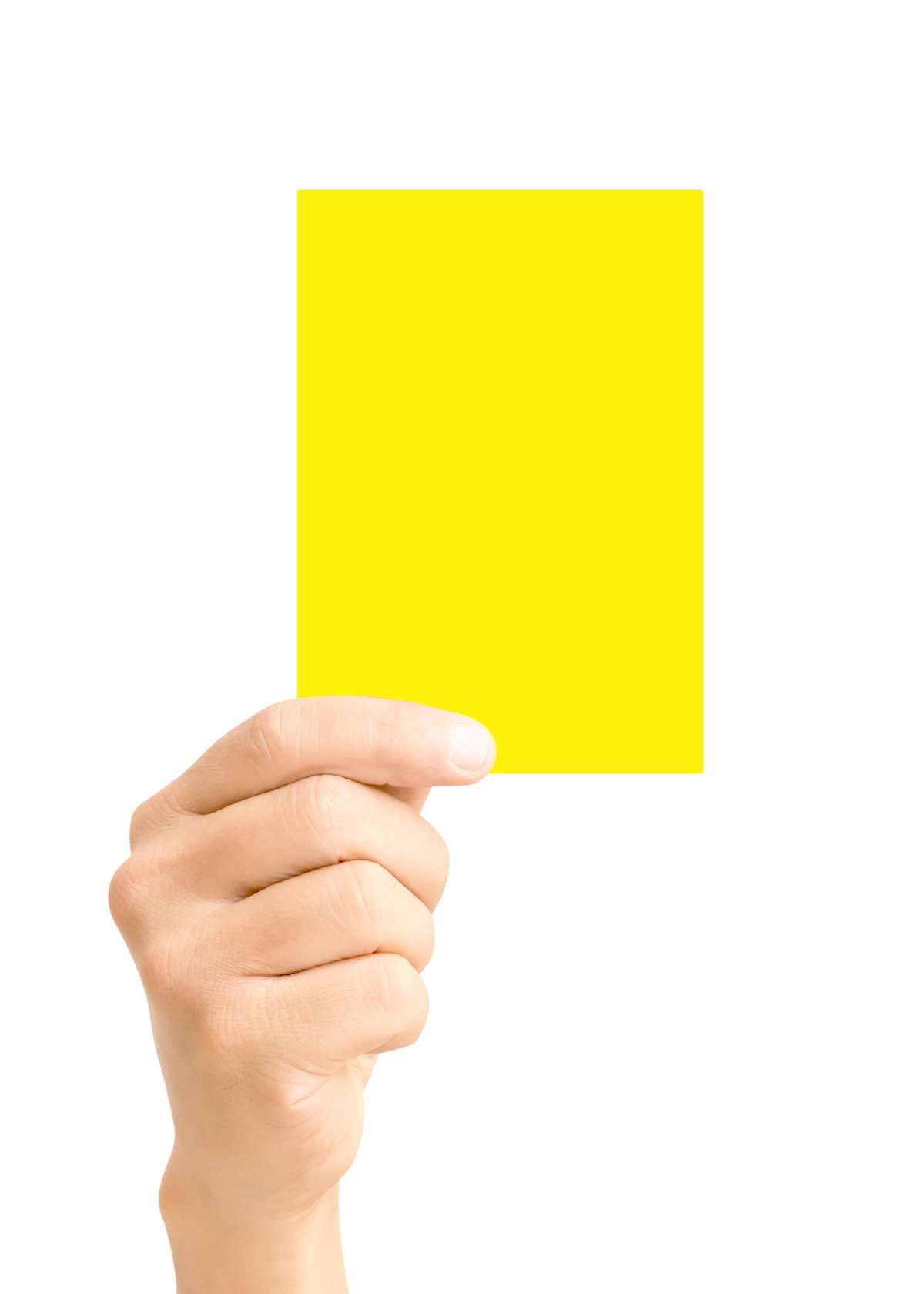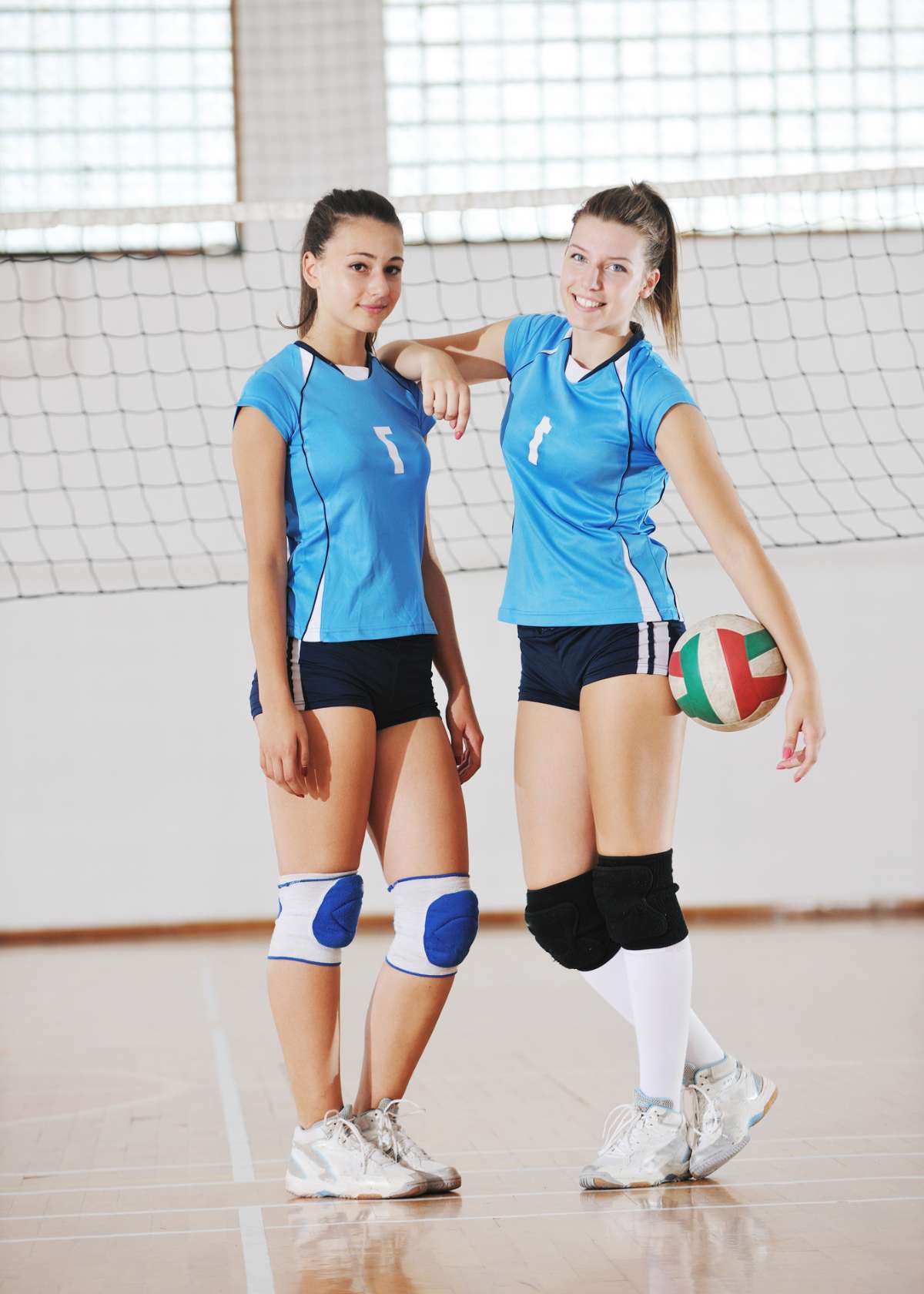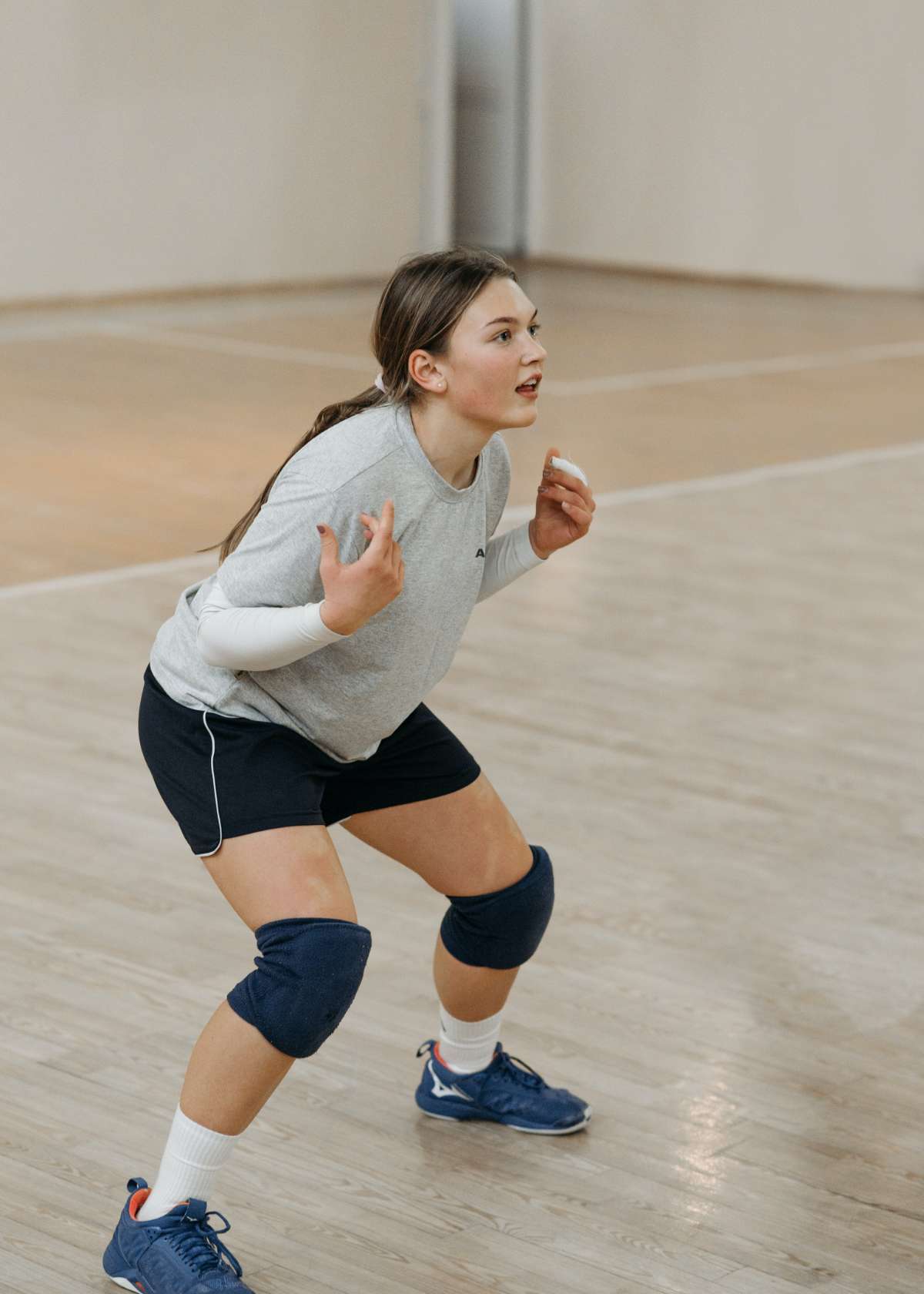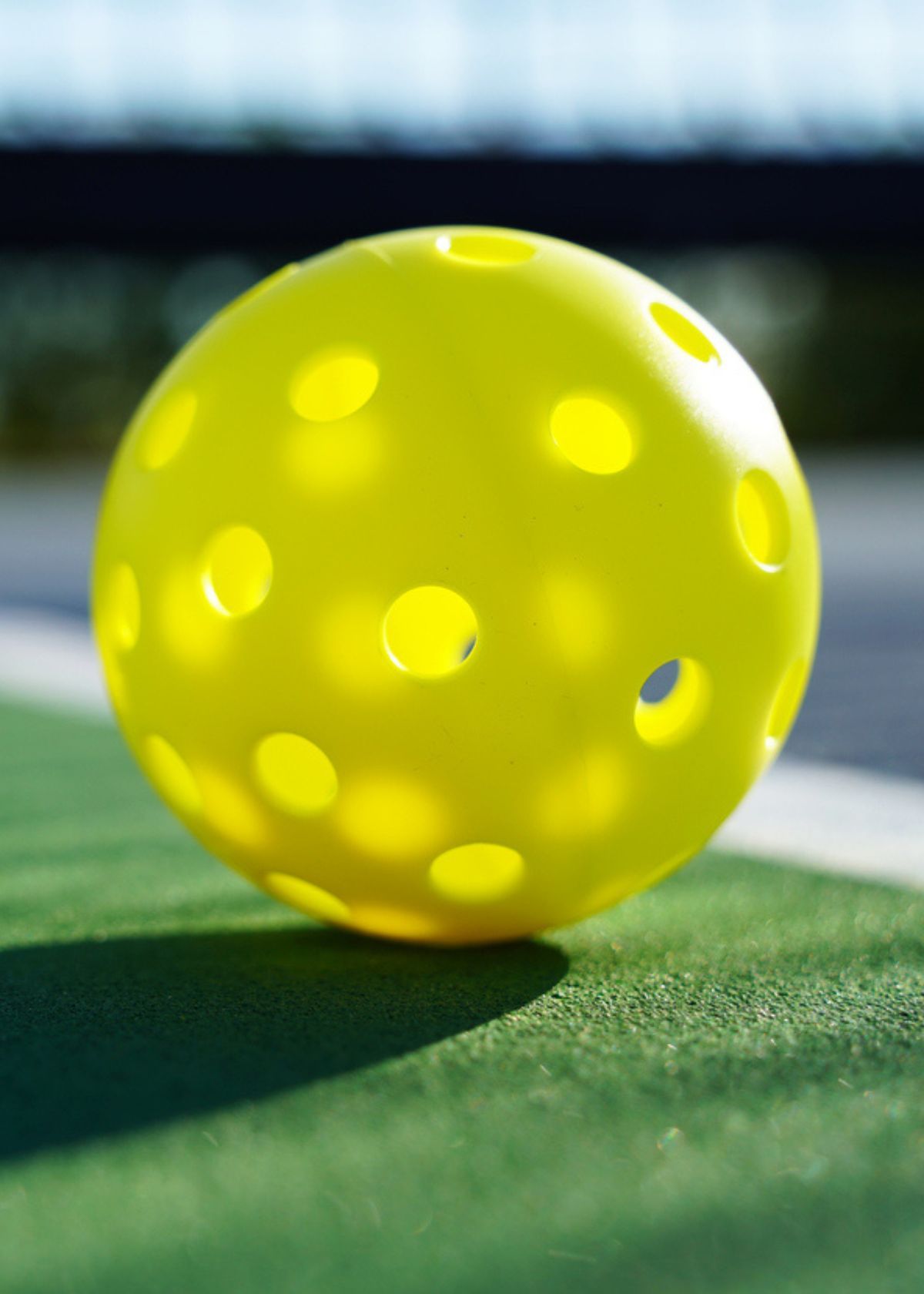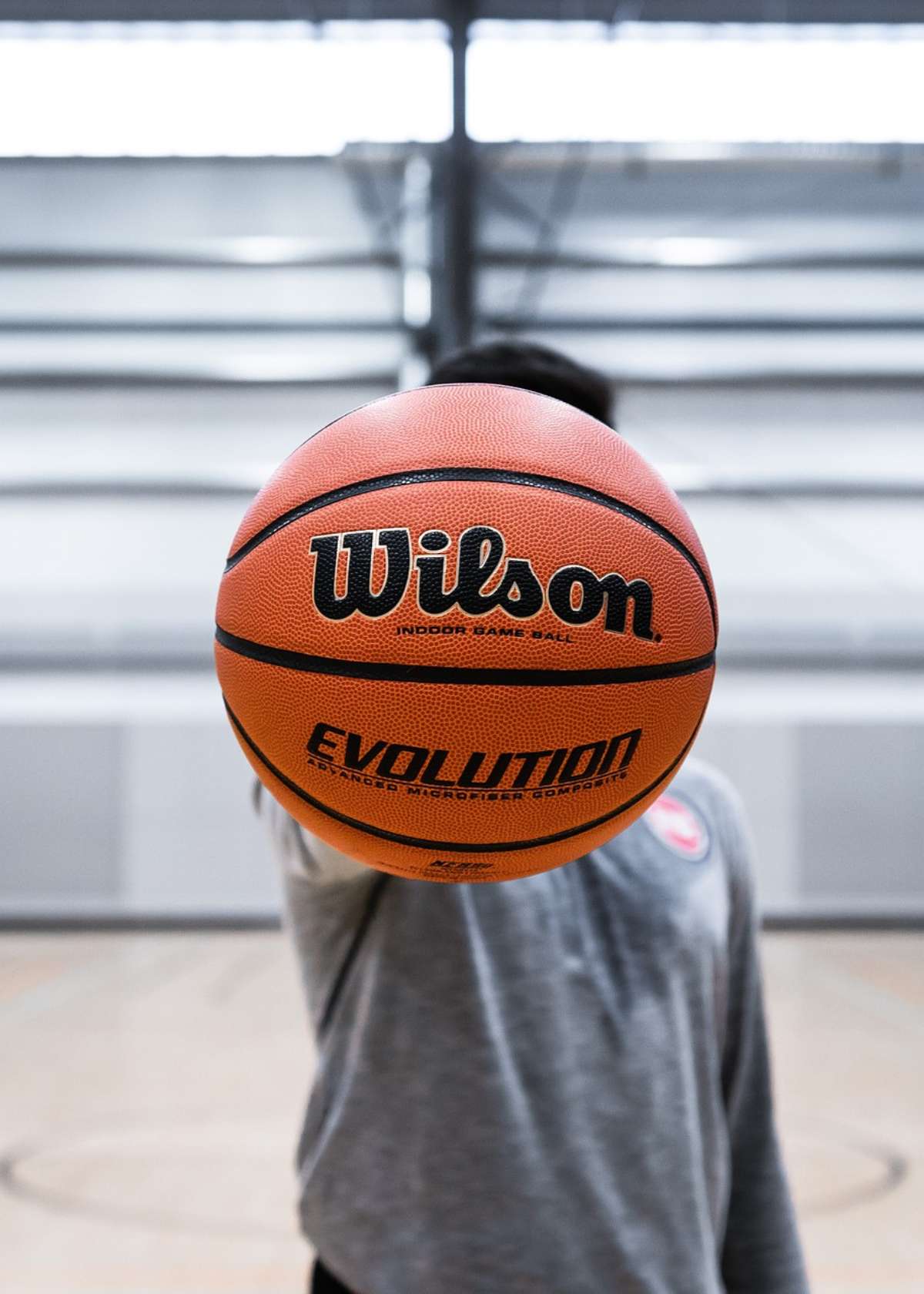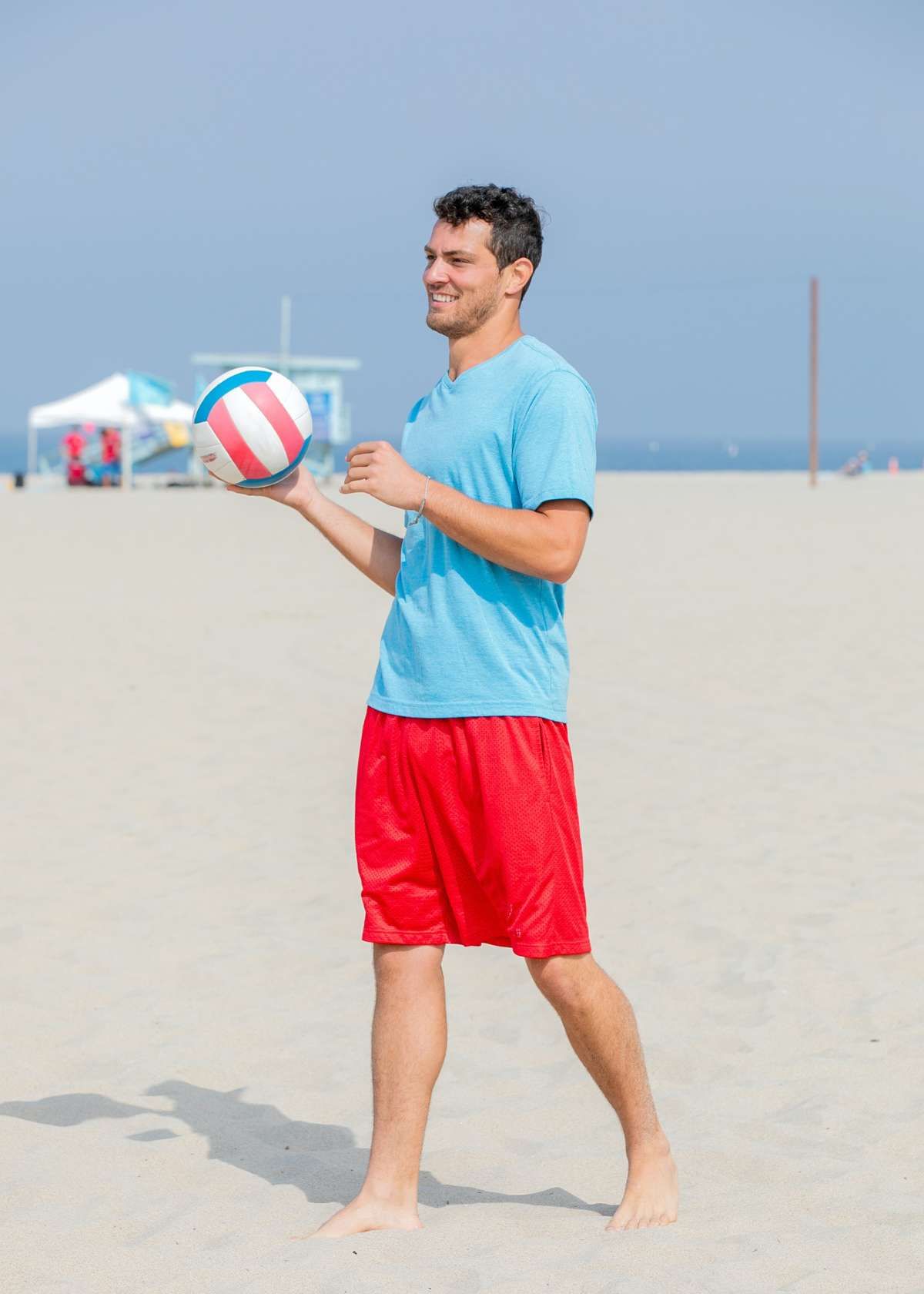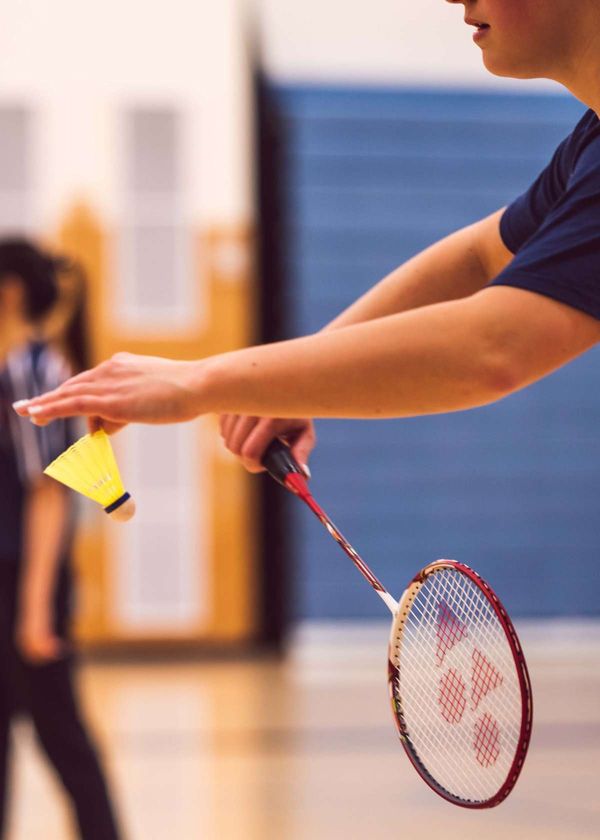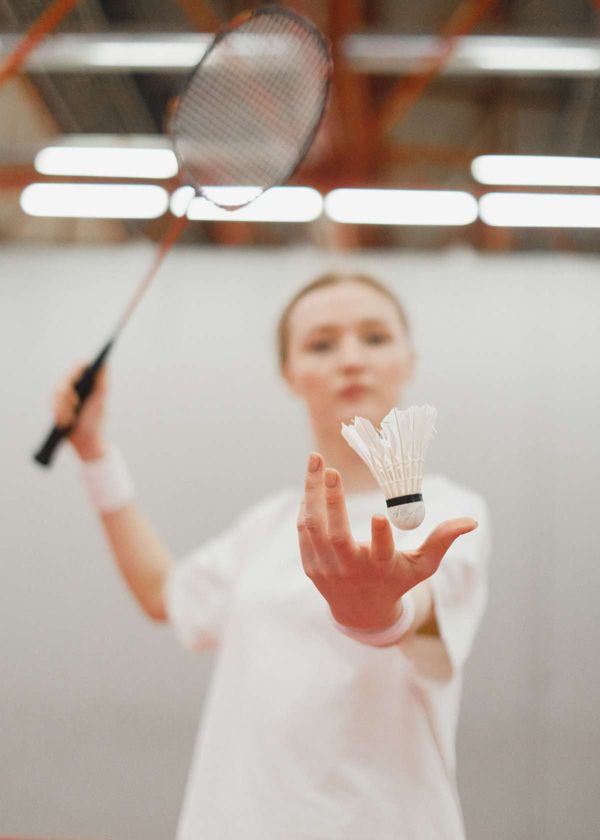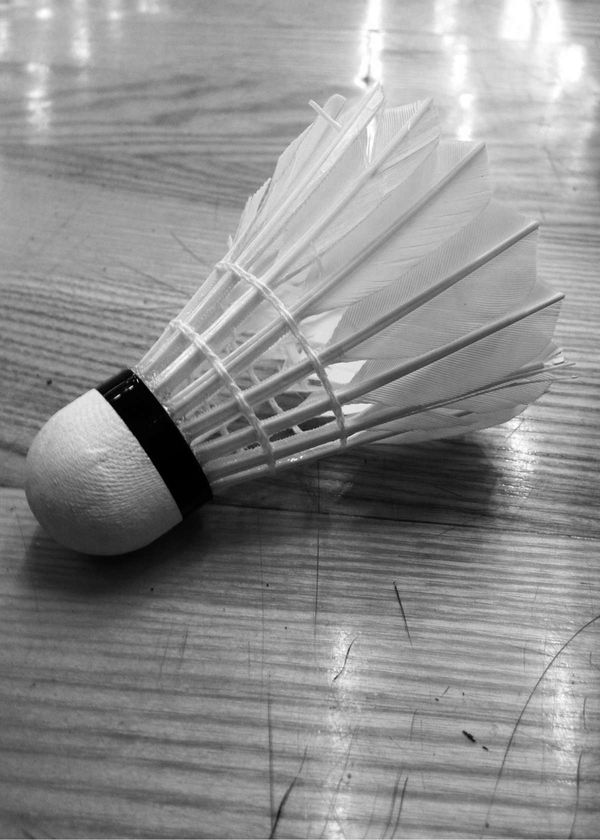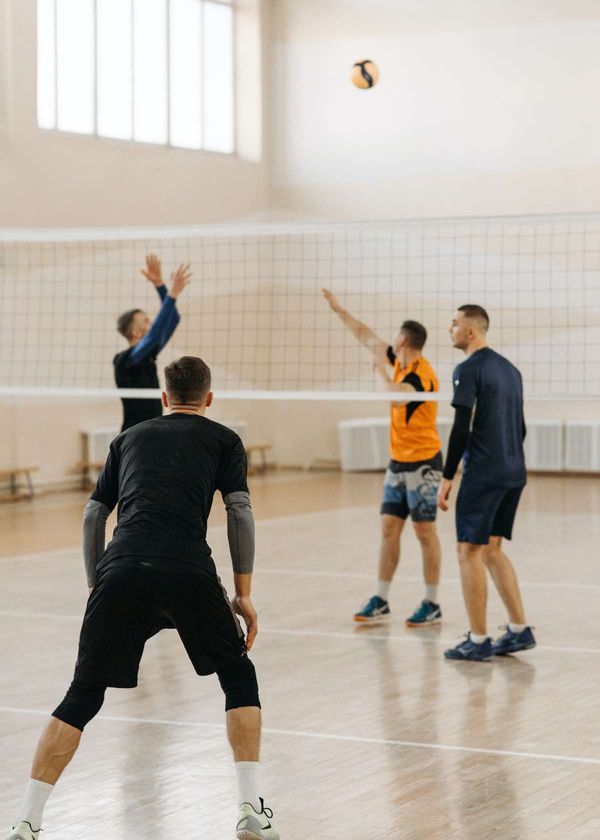Volleyball is a fun, fast-paced sport that requires skill and coordination. But have you ever thought about what goes into making a volleyball? From the materials used to the construction techniques, there's a lot that goes into creating these game balls.
In this blog post, we'll take a closer look at the anatomy of a volleyball, the materials that are used, and how this affects the performance and play of the game.
Whether you're a beginner or an experienced player, this information is sure to enhance your appreciation and understanding of this exciting sport.
What are volleyballs made of?
Volleyballs are made of high-quality synthetic materials that are durable, resistant, and long-lasting.
The standard indoor volleyball is typically made with an internal rubber bladder and a leather or synthetic cover.
While beach volleyball balls are often made with a softer, synthetic leather material designed to resist sand and saltwater. In either case, the ball's outer cover consists of 18 panels with bright contrasting colors for better visibility.
The internal bladder is made from high-quality rubber that helps maintain the ball's shape, as well as providing optimal bounce and control when playing.
The bottom line is, if you want a high-quality volleyball that can withstand the demands of competitive play, it needs to be constructed with quality materials.
The history and evolution of volleyballs
Volleyball is believed to have originated in the United States in the late 1800s as a form of recreational activity. The history of volleyball dates back to 1895 when it was invented by William G. Morgan, who was looking for a game that combined elements of basketball, baseball, tennis, and handball.
The first "volleyball" was actually a fishing net buoy used as a ball. The first volleyball that was actually manufactured was made with a basketball bladder and a leather cover.
As the game evolved, so did the ball. Today's modern volleyballs are made of synthetic materials that are more durable, water-resistant, and easier to grip.
Today, we have a variety of volleyball styles suited for indoor and outdoor play, including beach volleyball and specialized balls for training and competition.
Anatomy of a volleyball: Key components
A volleyball consists of three main components: the outer cover, the inner layer, and the bladder. The outer cover is typically made of synthetic leather or composite materials that are durable and water-resistant.
The inner layer is composed of several layers of fabric or foam to provide the ball's shape and weight distribution. Finally, the bladder is typically made of rubber or synthetic materials and is responsible for maintaining the ball's air pressure.
Depending on the level of play, different cover materials may be used to ensure optimal grip and touch. For example, outdoor volleyballs typically feature a softer, textured cover for better grip in wet conditions.
Outer cover materials used in volleyballs
The outer cover of a volleyball can be made from a variety of materials, including synthetic leather, composite materials, or a blend of both. These materials are designed to be durable, water-resistant, and provide a good grip for players.
Synthetic leather is the most common material used for indoor volleyballs because it provides good control and durability.
Composite materials, on the other hand, are more common in beach and outdoor volleyballs because they can withstand the elements and harsher conditions.
Inner layers and bladder materials
The inner layer of a volleyball is typically made up of several layers of fabric or foam material to provide shape and weight distribution.
The bladder is typically made from rubber or synthetic materials and is responsible for maintaining the ball's air pressure. Some professional-grade balls may have a butyl or latex bladder for improved air retention.
The quality and consistency of the materials used in the inner layer and bladder can significantly affect the ball's performance and playability.

Indoor vs Beach volleyball balls
While indoor and beach volleyballs may look similar, they are actually designed with different materials and specifications.
Indoor volleyballs are typically heavier and have a harder outer cover than beach volleyballs. The added weight provides better control in an indoor environment, where players typically aren't dealing with outside elements like wind or the sun.
Beach volleyball balls, on the other hand, are bigger, lighter, and feature a softer outer cover to withstand the sand and rougher terrain.

Volleyball size and weight standards
Volleyballs used in competition must meet specific size and weight requirements to ensure consistent play.
Indoor volleyballs are typically slightly heavier and smaller than beach volleyballs, with a diameter of 65-67 cm (25.5-26-5 inches) and a weight of 260-280 grams (9.2-9.9 ounces).
Beach volleyballs are slightly larger and lighter, with a diameter of 66-68 cm (25.98-26.77 inches) and a weight of 260-280 grams (9.2-9.87 ounces).
How ball construction affects performance and play
The materials used in a volleyball's construction can significantly affect its performance and playability. The weight, shape, and feel of a ball all depend on its construction.
For example, balls with a softer outer cover have better control and touch, while harder outer covers provide more stability and durability. The materials used in the inner layer and bladder also have an impact on the ball's bounce, flight path, and overall feel.
Typically, a lighter, softer ball is more suitable for beach volleyball, while heavier and rougher balls are ideal for indoor play. It's essential to select the right ball for your game because it significantly affects the game's performance and playability.
Choosing the right volleyball for your needs
When shopping for a volleyball, it's essential to consider your individual needs and preferences. Choose a ball that matches the type of play you'll be participating in, whether it's indoor or outdoor, and consider the materials used in the ball's construction.
You should also consider the ball's grip and feel, as this can significantly affect your performance. Some balls are better suited for gameplay, while others are perfect for training and practicing specific skills.
If you're just starting out, a beginner-level ball made of synthetic leather may be a good choice. If you're an advanced player, professional-grade volleyballs made of composite leather or polyurethane may be more suitable for your needs.
Caring for your volleyball: Maintenance and storage tips
Today's volleyballs are designed to maximize performance, accuracy, and durability. The high-quality materials used in their construction make them less susceptible to wear and tear.
However, to ensure your volleyball lasts as long as possible, it's essential to take proper care of it. Store your ball in a cool, dry place away from direct sunlight, and keep it properly inflated to maintain its shape and bounce.
It's also important to clean your ball regularly with mild soap and water to remove dirt and debris that can accumulate over time. You may also want to invest in a ball pump to keep your ball properly inflated and ready for play at all times.
Conclusion:
In conclusion, volleyball is one of the most popular sports in the world, and the ball is the most fundamental equipment for the game. The materials used to make the ball are fundamental to the performance and play of the game.
By considering factors like the ball's size, weight, and materials used, you can choose a ball that meets your individual needs and preferences. The outer cover, bladder, and other layers combine to create the perfect volleyball.
So the next time you hit the court, take a closer look at the ball you're using and appreciate the complexity and sophistication of this seemingly simple object. Happy playing!
Elevate your volleyball game effortlessly with our top-rated equipment picks. We've done the hard work, so you don't have to.
Get the inside scoop on volleyball and sports & fitness with our captivating blogs!
